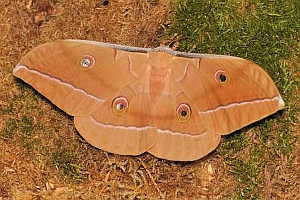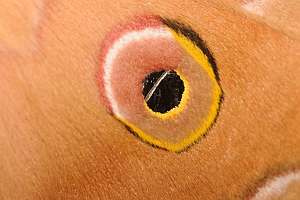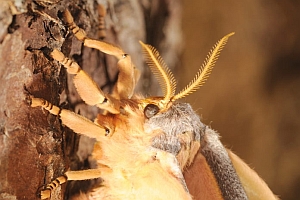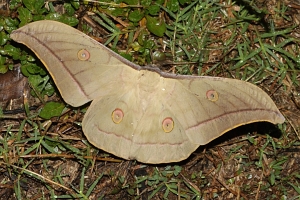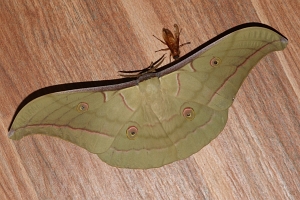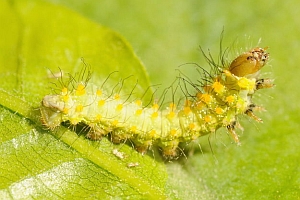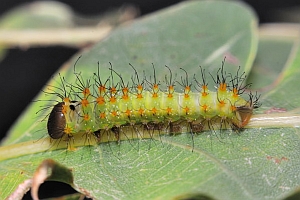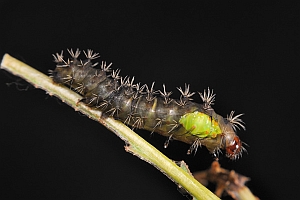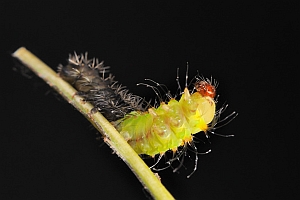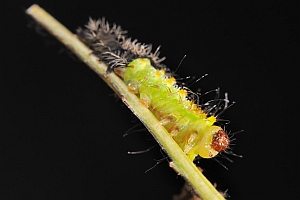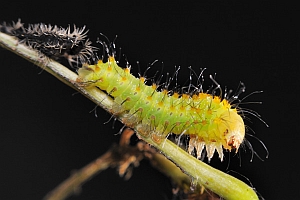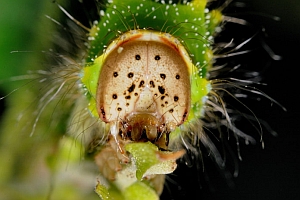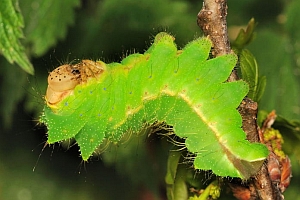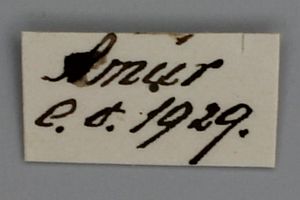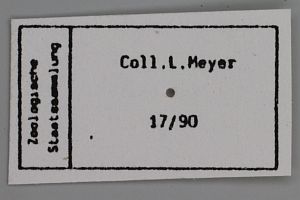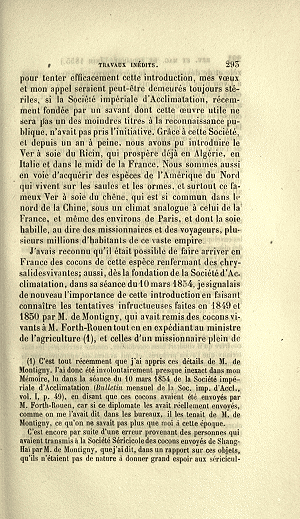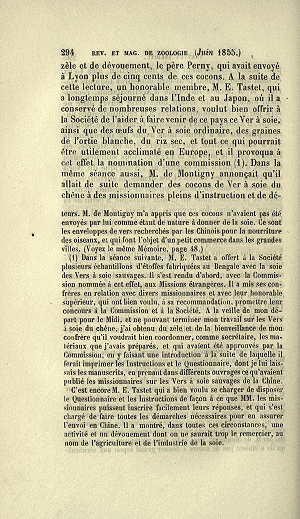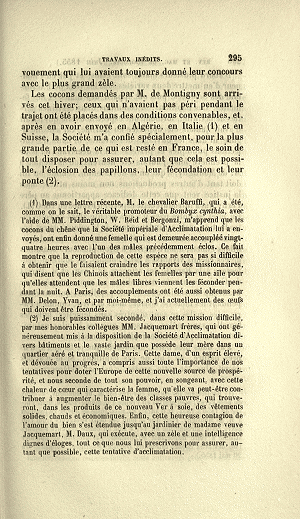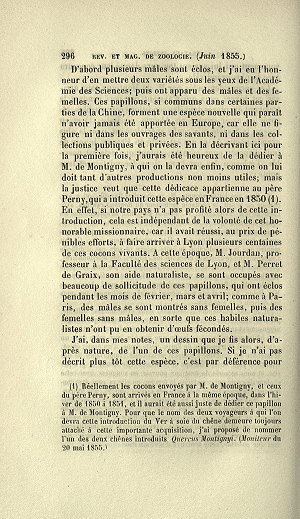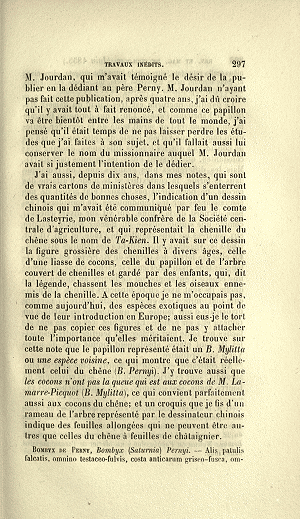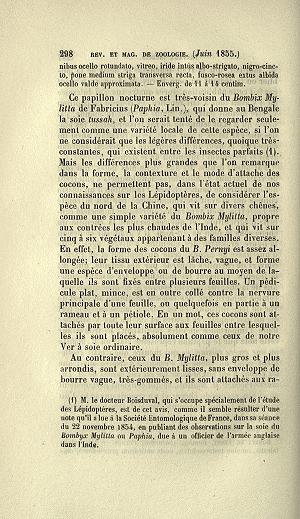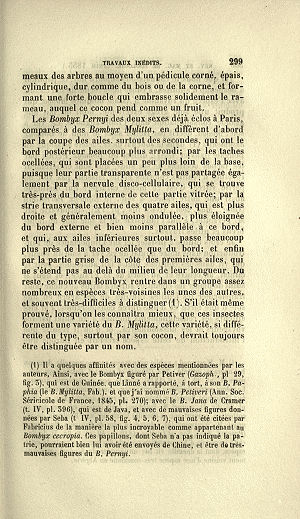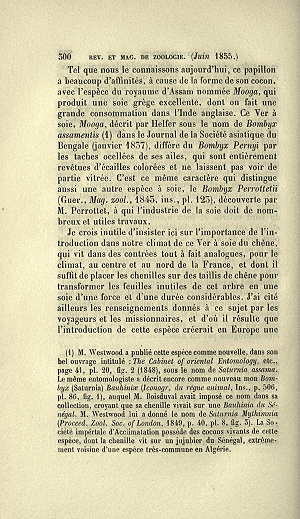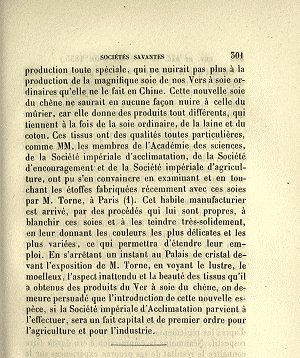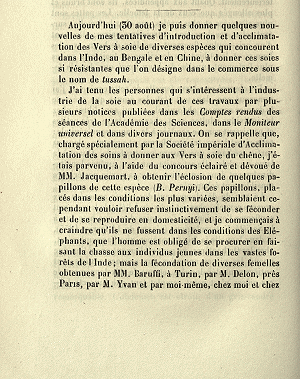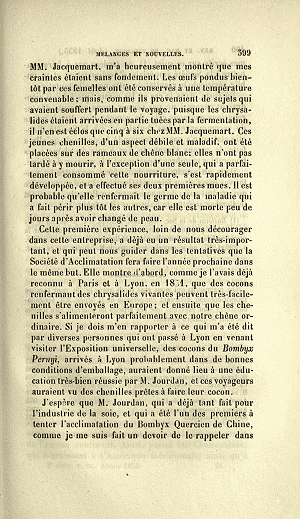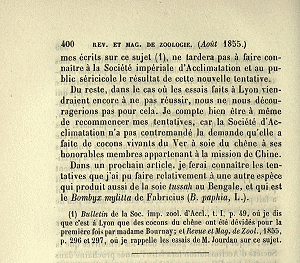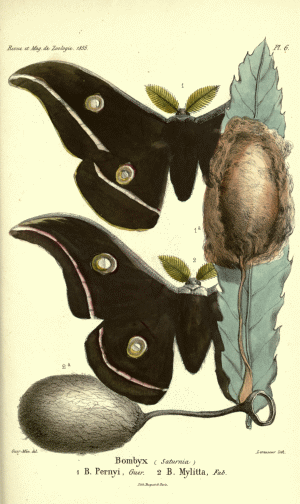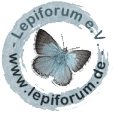

 +7Kontinente:EUAS
+7Kontinente:EUAS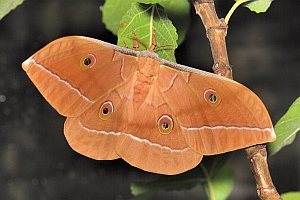
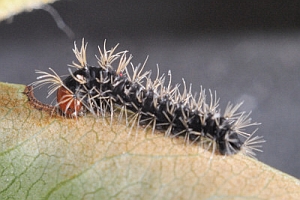
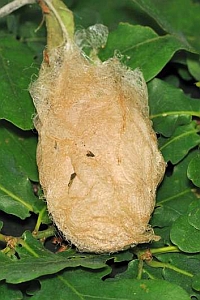
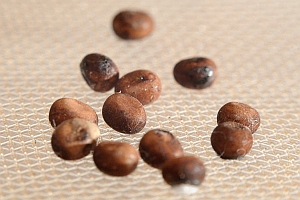
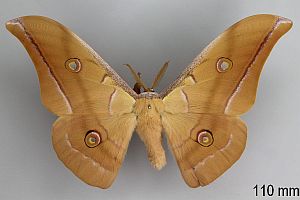
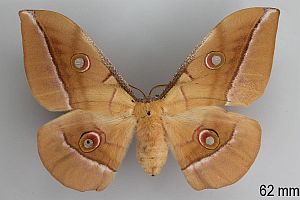
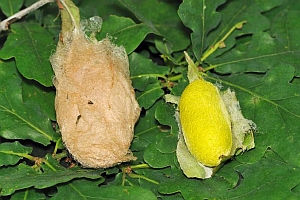
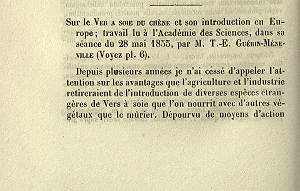
1. Lebendfotos
1.1. Falter
1.2. Raupe
1, L1: 15. März 2010
2, L2 (oder L3): 30. März 2010
3, L3: 5. September 2011
4-7: Häutung L2 auf L3: 6. September 2011
8: 24. April 2010
9: L4: 9. Mai 2010
1.3. Puppe
1.4. Ei
2. Diagnose
2.1. Männchen
2.2. Weibchen
2.3. Kokonvergleich zwischen Antheraea pernyi - links und Antheraea yamamai - rechts
2.4. Erstbeschreibung
3. Weitere Informationen
3.1. Andere Kombinationen
- Bombyx pernyi Guérin-Méneville, 1855 [Originalkombination]
3.2. Faunistik
Die Art ist im Norden Chinas beheimatet, wurde aber häufig zur Seidenzucht nach Europa gebracht. Trotz der eher polyphagen Raupen (Eichen und andere Laubbäume) hielten sich entflogene oder ausgewilderte Exemplare meist nicht lange. Leraut (2006: 32) fasst zusammen: "Introduit en France au XIXe siècle pour en tirer de la soie. Ne s'est maintenu en Europe qu'aux Baléares et dans les environs de Barcelone (Espagne)." Vives Moreno (2014: 798) schränkt in seiner Anmerkung das tatsächlich etablierte Vorkommen weiter ein: "[998] Cette espèce est présente dans les îles Baléares, Espagne, où elle maintient des colonies stables (PINYA et al., 2013). Celles qui se trouvaient dans la Péninsule Ibérique peuvent considérer inexistantes." Das Vorkommen um Barcelona betraf wohl primär Samia cynthia. Wir führen die Art für das spanische Festland daher nur mit Einzelnachweis-Symbol und nicht als etablierte Art, auch wenn sie sich stellenweise über mehrere Jahre gehalten haben mag.
Japaridze & Seropian (2025) berichten über Funde im Westen von Georgien: "GEORGIA • 2♂; Imereti, Baghdati; 6 May 2021; leg: G. Gorgodze; JLGT • 1♂ (CaBOL-ID 1021655); Ilemi; leg: T. Lomidze; 16 June 2021; JLGT • 1♂; Vartsikhe; leg: A. Babunashvili; 5 April 2024; JLGT • 1♂; Ajameti; leg: A. Bubunashvili; 29 April 2024; JLGT." Sie halten die Art dort bereits für etabliert und vermutlich schon sehr lange anwesend: "Specimens in our study collected in 2021 and 2024 confirm a stable, locally established population in Imereti, western Georgia; although so far, no substantial harm to local Quercus spp. has been documented. These are the first verified records of the genus Antheraea in the Caucasus. As with S. cynthia, A. pernyi was probably introduced to the South Caucasus for silk production purposes, most likely during the 1930s under Soviet agricultural initiatives. Although the original introduction site is unknown, the A. pernyi population in Imereti probably originated from individuals that escaped silk farming facilities established in the past."
(Autor: Erwin Rennwald)
3.3. Literatur
- Erstbeschreibung: Guérin-Méneville, T.-E. (1855): Sur le Ver a soie du chène et son introduction en Europe; travail lu à l'Académie des Sciences, dans sa séance du 28 mai 1855. — Revue et magasin de zoologie pure et appliquée. 2e série 7: 292-301, 398-400, pl. 6. Paris.
- Kausar, S., Qian, C., Abbas, M. N., Zhu, B.-J., Liu, Y., Wang, L., Sun, Y. & C.-L. Liu (2017): Characterization and functional analysis of the serpin-10 gene from oak silkworm, Antheraea pernyi (Lepidoptera: Saturniidae). — European Journal of Entomology 114: 430-438. [PDF auf eje.cz]
- Leraut, P. (2006): Papillons de nuit d'Europe. Volume 1. Bombyx, Sphinx, Écailles. ... — 272 S., Verrières le Buisson (N.A.P. Editions).
- Pinya, S., Suárez-Fernández, J. J. & X. Canyelles (2013): Distribution and status of Antheraea pernyi (Guérin-Méneville, 1855) in the island of Mallorca (Spain) (Lepidoptera: Saturniidae). — SHILAP Revista de lepidopterología 41 (163): 377-381. [PDF auf redalyc.org]
- Japaridze, L.-G. & A. Seropian (2025): Unwanted guests: The first records of two established non-native moth species in the Caucasus, with notes on non-native fauna of Georgia. — Caucasiana, 4: 137–151. DOI: 10.3897/caucasiana.4.e168433. [zum open access-Artikel mit PDF-Download auf caucasiana.pensoft.net]
- Vives-Moreno, A. (2014): Catálogo sistemático y sinonímico de los Lepidoptera de la Península Ibérica, de Ceuta, de Melilla y de las Islas Azores, Baleares, Canarias, Madeira y Salvajes (Insecta: Lepidoptera). — Suplemento de SHILAP Revista de Lepidopterología: 1-1184. Madrid.








